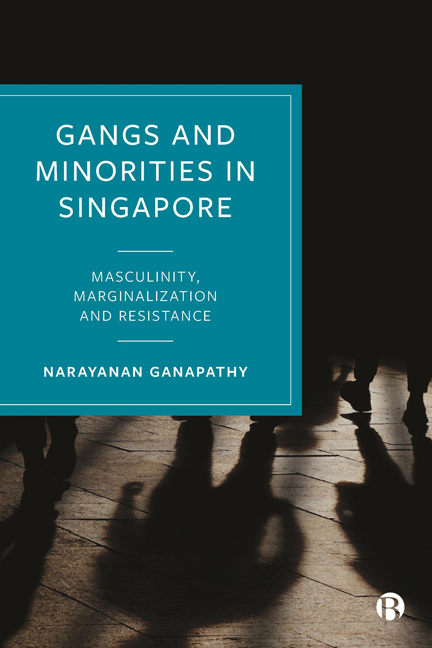Book contents
- Frontmatter
- Contents
- List of Figures
- List of Abbreviations
- Glossary of Non-English Terms
- About the Author
- Preface
- 1 Introduction: Framing the Study
- 2 Omega as Organized Crime?
- 3 Racial Minorities and Crime
- 4 Methods of Study
- 5 The Rise of Omega
- 6 Fearless and Fearsome
- 7 The Omega Wave: The ‘Triadization’ of Omega
- 8 Conclusion: Law, Drug Crimes and Marginality
- Notes
- References
- Index
Preface
Published online by Cambridge University Press: 28 March 2024
- Frontmatter
- Contents
- List of Figures
- List of Abbreviations
- Glossary of Non-English Terms
- About the Author
- Preface
- 1 Introduction: Framing the Study
- 2 Omega as Organized Crime?
- 3 Racial Minorities and Crime
- 4 Methods of Study
- 5 The Rise of Omega
- 6 Fearless and Fearsome
- 7 The Omega Wave: The ‘Triadization’ of Omega
- 8 Conclusion: Law, Drug Crimes and Marginality
- Notes
- References
- Index
Summary
Following a series of gang clashes and knife violence in 2021 and early 2022, articles appeared in the mainstream press questioning whether the secret societies that plagued Singapore during the colonial and immediate post-independence periods were making a comeback to the now globally acclaimed modern, highly affluent, urbanized and cosmopolitan city state. Violence of any kind is seen as an anomaly in an otherwise safe, orderly and disciplined society. Having enjoyed phenomenal economic growth over the past 50 years or so and a crime rate that is conspicuously low relative to other industrialized societies, violence in ordinarily sanitized public spaces such as that reported in the articles came as a shock to the nation, to what Émile Durkheim termed the ‘collective conscience’. Gang members and the perpetrators of gang violence are often described by both media and criminal justice personnel as wayward and bored youth, lacking supervision from parents, thrill seeking with no aspirations or goals in life. Past gangsters and retired law enforcement officers interviewed for the media have described the gangsters of today as nothing more than a group of boorish boys and girls trying to demonstrate their bravado, in search of ‘glory’, and a far cry from those secret society members of the 1960s and 1970s who are often held up as the archetype of ‘real gangsters’.
As a social scientist reading many of these reports, two issues are of concern but remain largely unaddressed. First, is the real or perceived relationship between youth gangs and adult criminal organizations in the processes of gang formation? Youth gangs portrayed in early research and in the popular media were seen as predominantly an adolescent phenomenon, formed spontaneously or purposefully by youths and largely isolated from community influences. Does this characterization of youth gangs accurately reflect reality? Do youth gangs have close ties with adult criminal organizations and, in particular, with secret societies? Is there a functionally structural relationship between youth gangs and adult organizations, through which youth gangs are being recruited by adult secret society members for lucrative work, such as protecting illicit businesses and working as ‘street soldiers’ in economic and territorial affairs? Are secret societies so deeply institutionalized in legitimate society that we fail to even notice them in local spaces, their possession of criminal social capital that straddles both under-and upper-worlds, which facilitates as much as it conceals their (organized) criminality?
- Type
- Chapter
- Information
- Gangs and Minorities in SingaporeMasculinity, Marginalization and Resistance, pp. ix - xivPublisher: Bristol University PressPrint publication year: 2023

